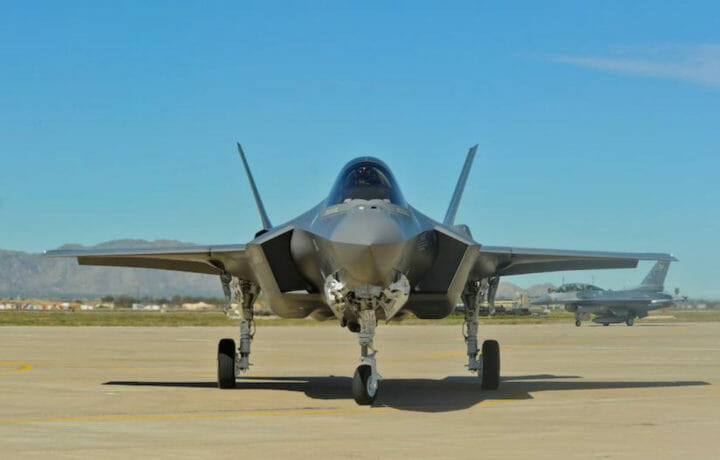With the F-35 hosting a number of features, such as the unmatched ability to evade enemy detection, weapons capabilities, supersonic speed, extended range and more, you might think it is one of these qualities that makes the F-35 the most desirable aircraft. But the truth is the most important aspect, especially to those flying this aircraft, is pilot survivability.
Pilot Survivability with the F-35
In a recent interview with F-35 pilots on Security Television Network, they covered a wide range of topics focused around the F-35 but the fact that pilots are much more likely to survive in an F-35 than other available fighter jets is something that makes the F-35 desirable for those who fly it.
In 2018, the military saw the death toll for aviation rising with 133 troops killed in five years. In an investigation, Military Times found that accidents involving military’s manned fighter, bomber, helicopter, and cargo warplanes rose nearly 40 percent from fiscal years 2013 to 2017. Highlighting the risk that pilots take every time they take off in their aircraft.
There is risk. But the F-35A survivability is an important aspect of what the jet can do. Survivability F-35 pilot and Chief of Fighter Operations at Lockheed Martin Tony “Brik” Wilson says pilot survivability is arguably the most significant advantage of the F-35.
“It’s not just survivability when you take this aircraft into harm’s way. Pilot safety is first and foremost in almost everything that we do from the time that the canopy comes down to the time the jet is back, safe on the deck, having completed its mission. Then the pilot is able to hop out and safely go home,” Wilson said in the interview with Security Television Network.
Key Safety Feature
One of the key safety features that the F-35 has is the Auto Ground Collision Avoidance System (Auto GCAS). Pilots trust this program and have the option to turn off this feature. In a case study called “Trust-Based Analysis of an Air Force Collision Avoidance System” in “Ergonomics in Design: The Quarterly of Human Factors Application” found that the Auto GCAS was deemed far superior by test pilots than previous “warning systems” which are prone to “false alarms” which degrade trust by the pilots using the systems.
The way the Auto GCAS works is by calculating where the aircraft is and where it would hit the ground based upon the way it is flying at the time. If the fighter jet is flying toward a collision with the ground, the on-board computer system will override the flight path and pull the aircraft away from the ground. But the system requires the pilot to trust and use the equipment as it takes control of the aircraft and away from the pilot when it sees danger. If pilots can trust the system it will help prevent more accidents especially when it comes to pilots being spatially disoriented and being able to find their bearing with the help of the Auto GCAS.
Crashed F-35 Gets Second Life
The Air Force is also using crashes as a way to learn and teach how to maintain their F-35 fleet. Last year, an F-35A Lighting II fighter jet crashed when a pilot instructor attempted a landing during a night training accident. The pilot fortunately ejected safely, but the jet caught fire and was a mess of metal that would never fly again.
Instead of tossing the burnt remains the Air Force has decided to give it a second life. Until now, the Air Force has used operational aircraft for F-35 maintenance training. But that isn’t always the best situation because Squadrons have missions and there might not be adequate time to train people. But now with a trashed F-35, maintainers can spend as much time as they want working to hone their skill without the worry of meeting an operational time schedule. Providing maintainers more time to become experts in their craft and helping to improve overall safety for each aircraft.




